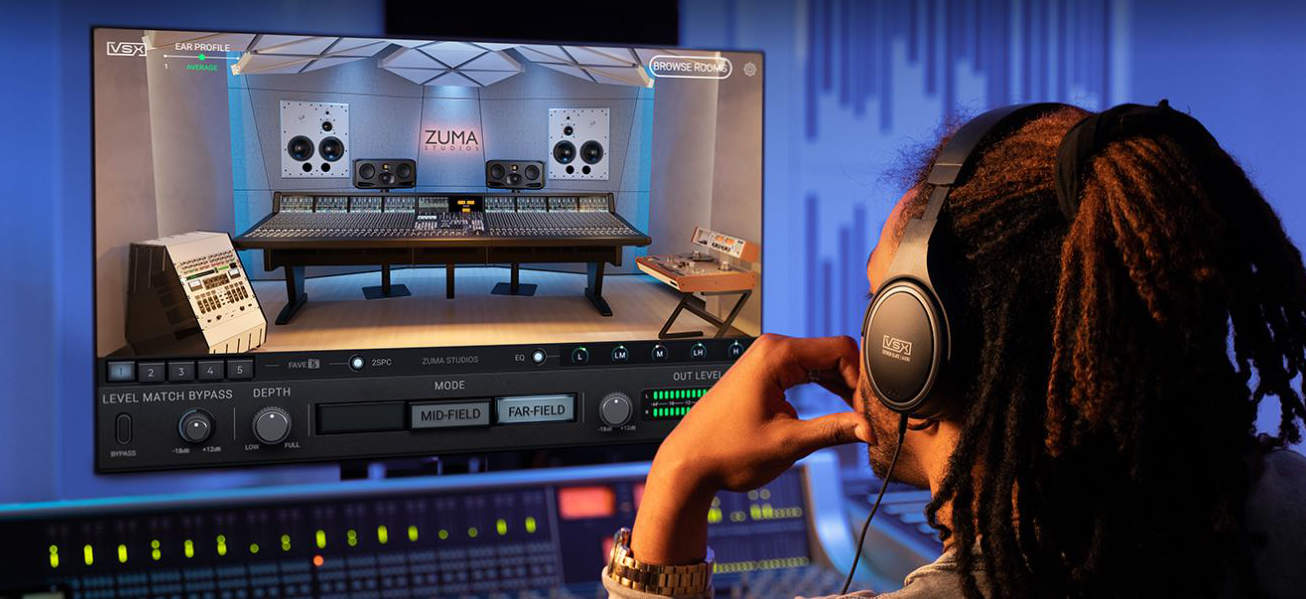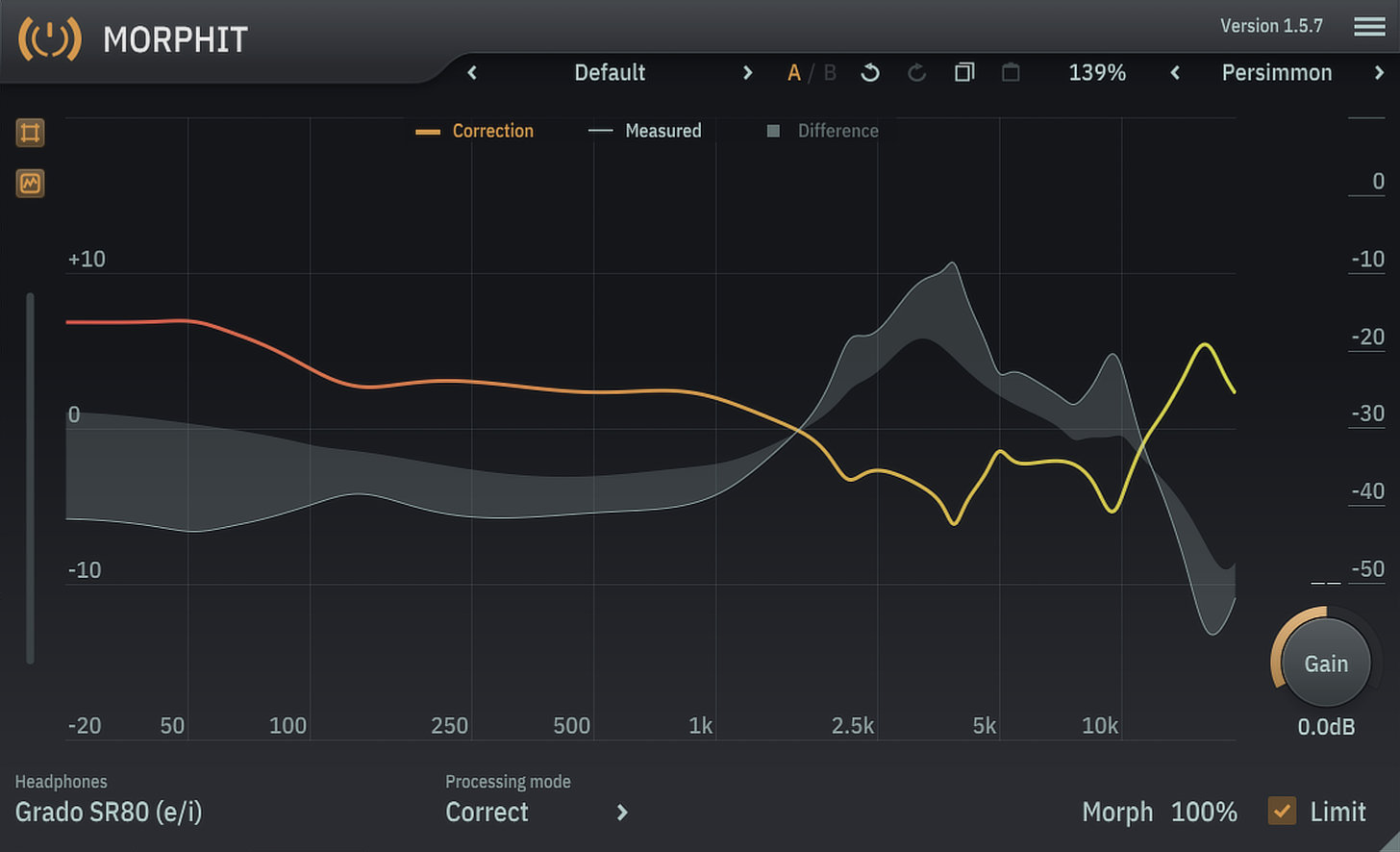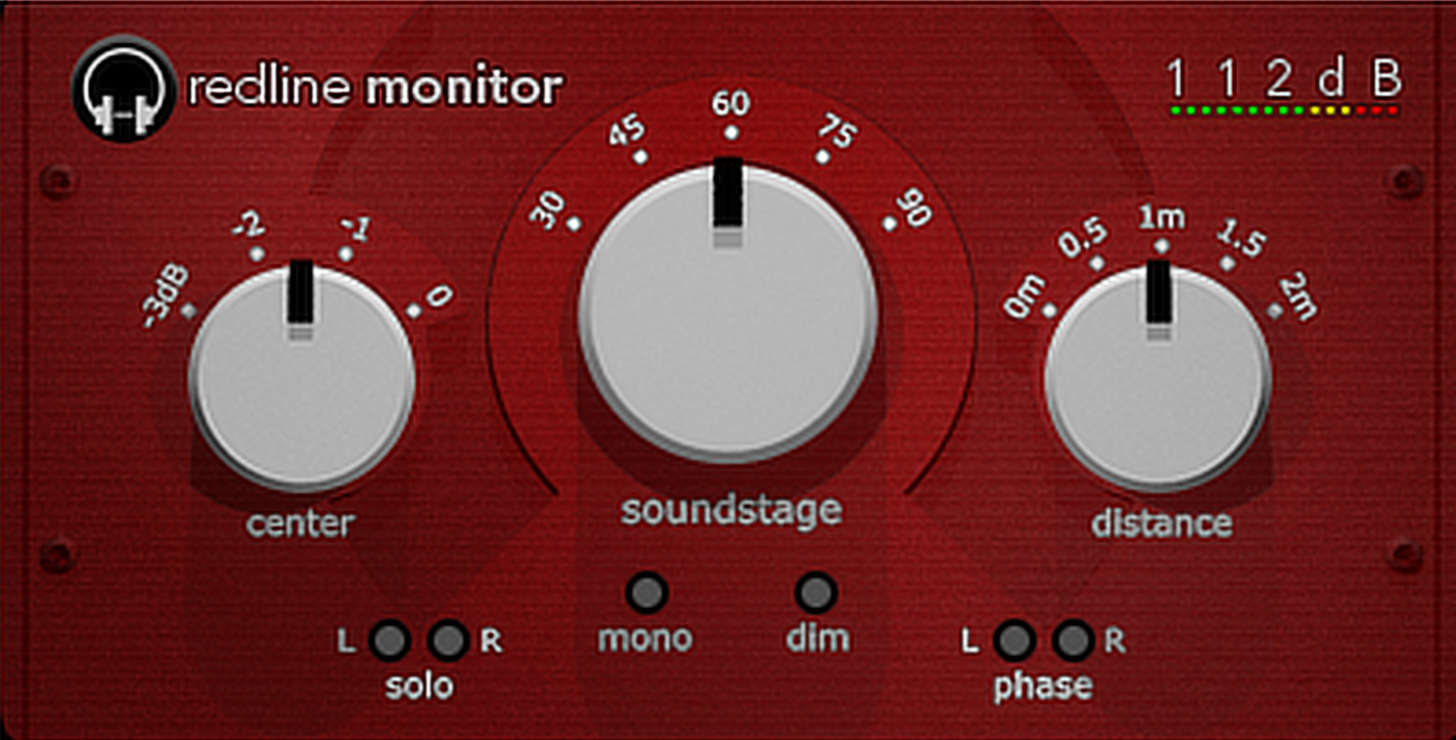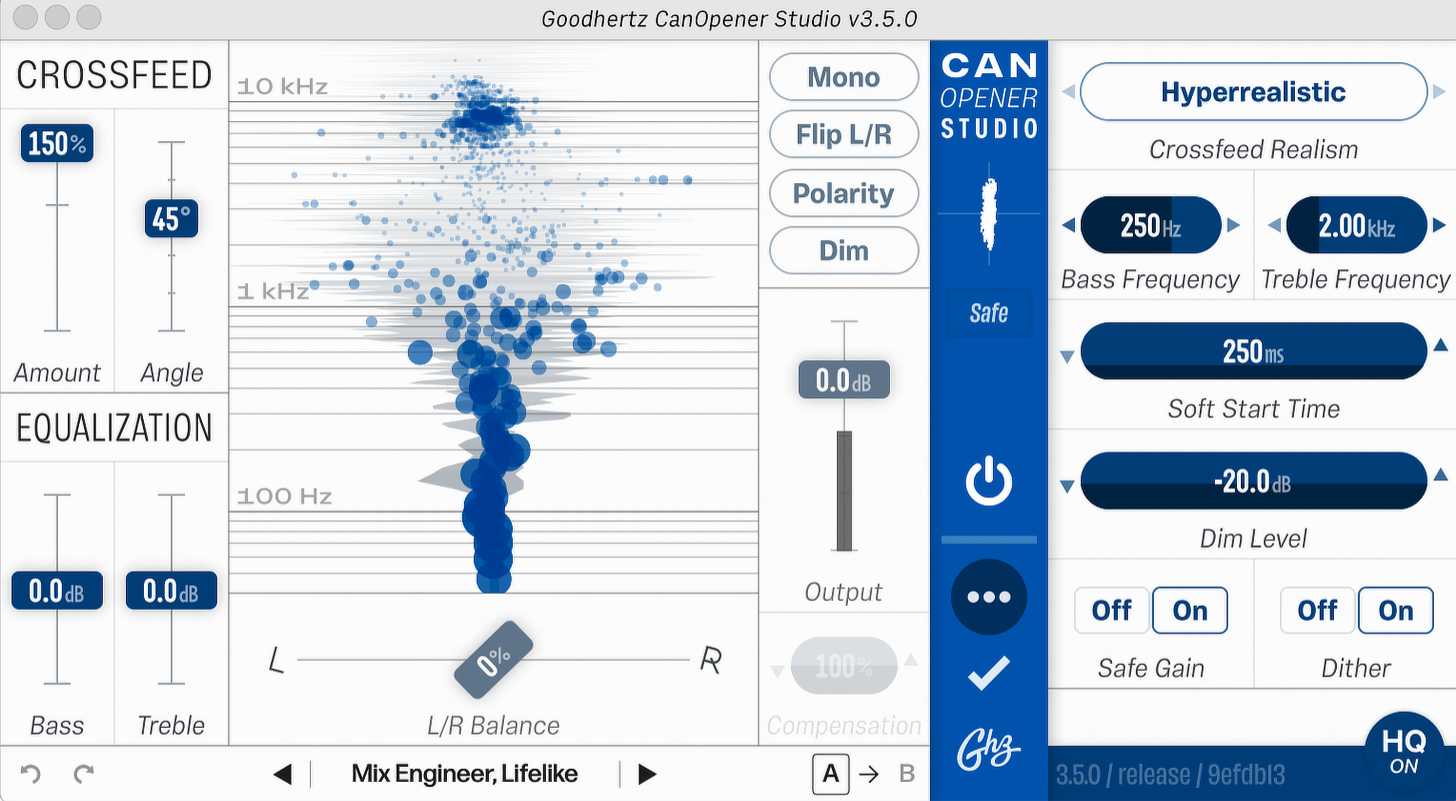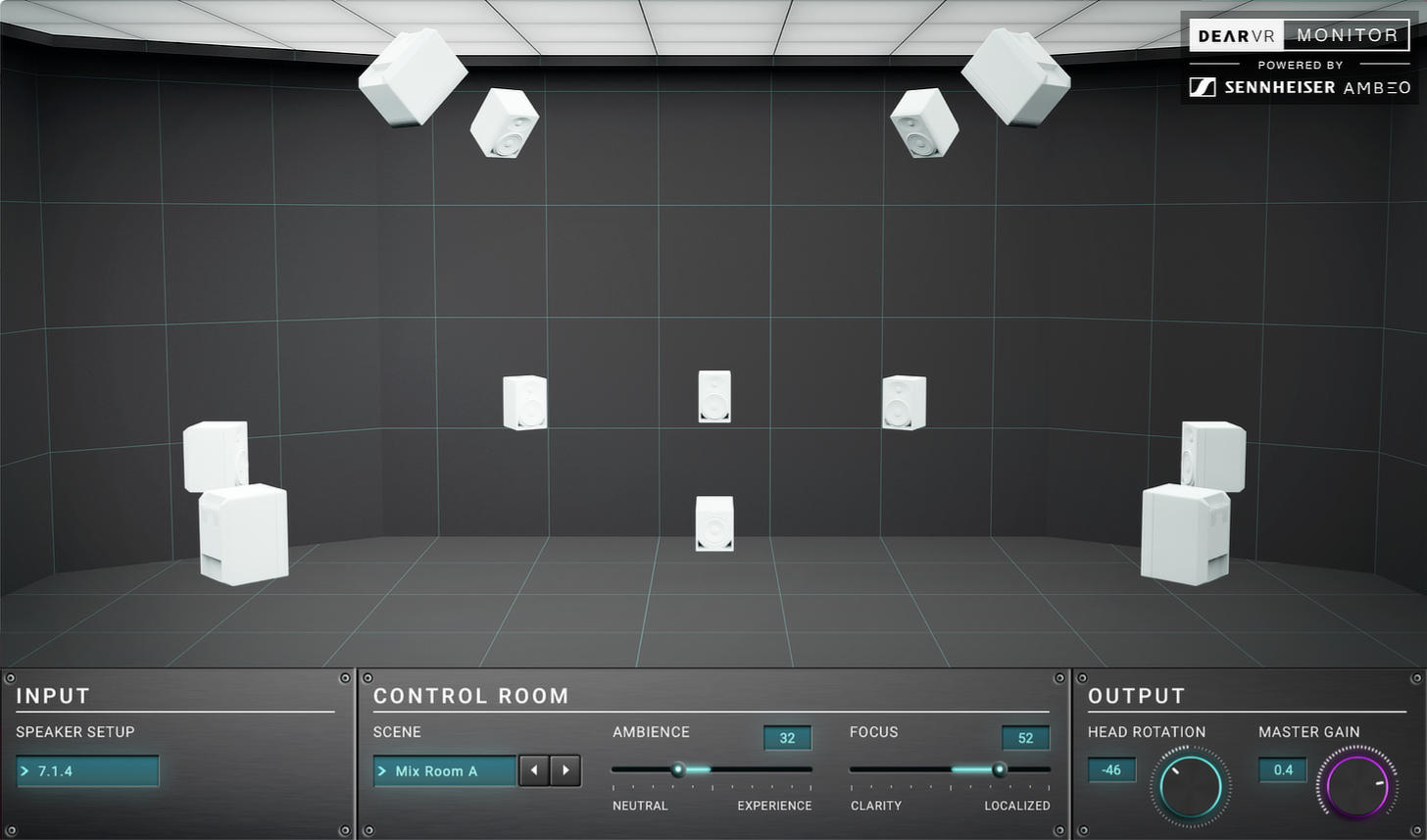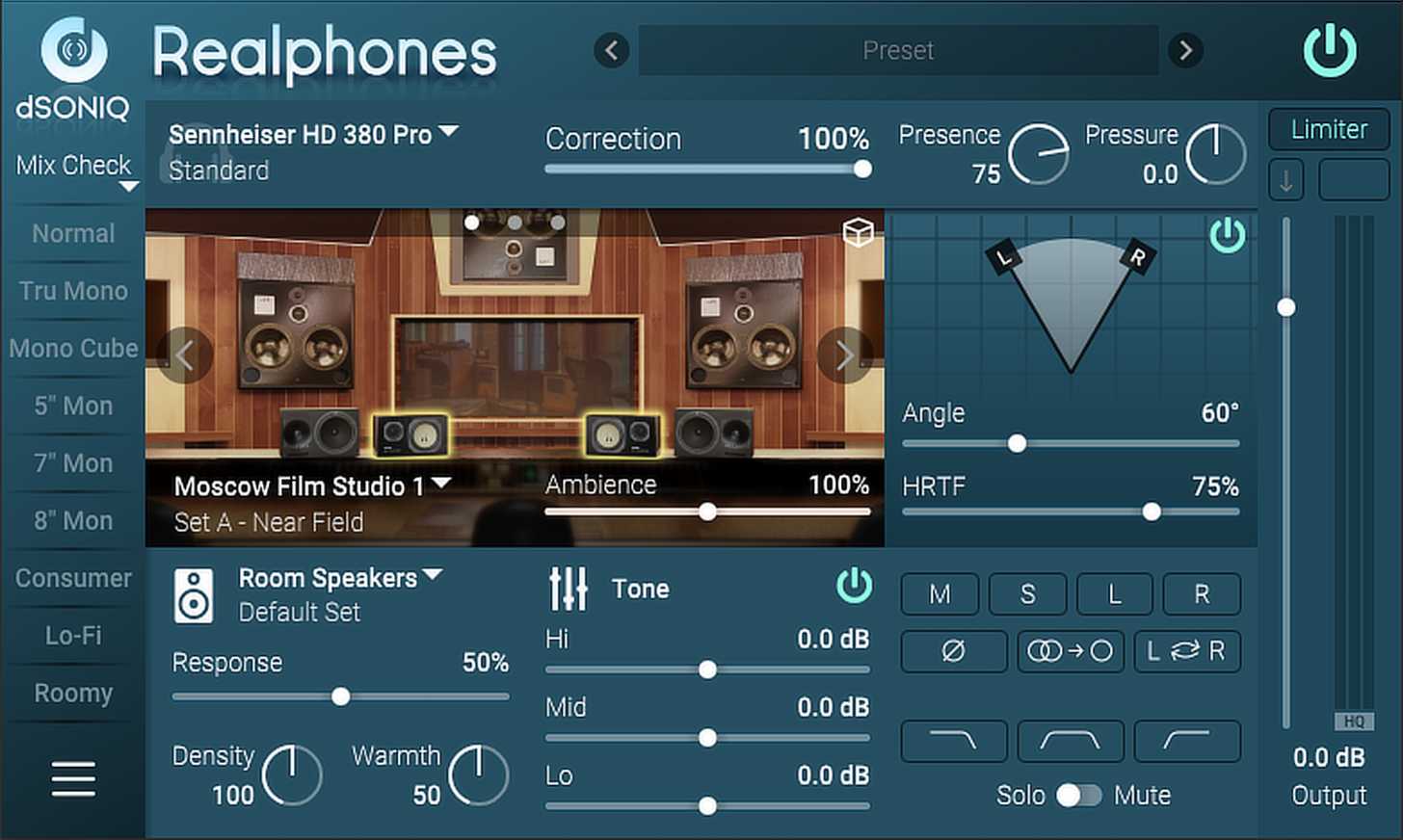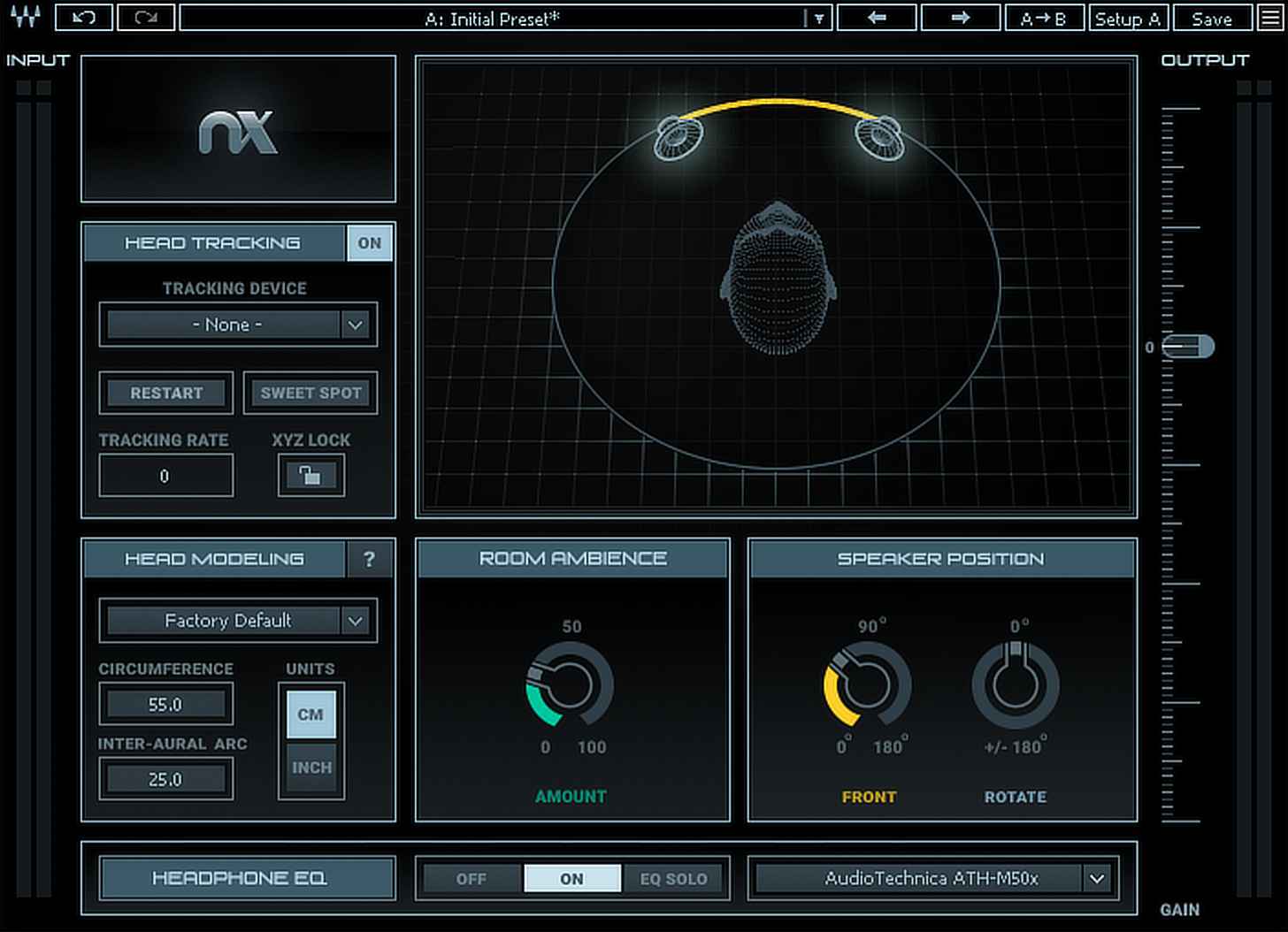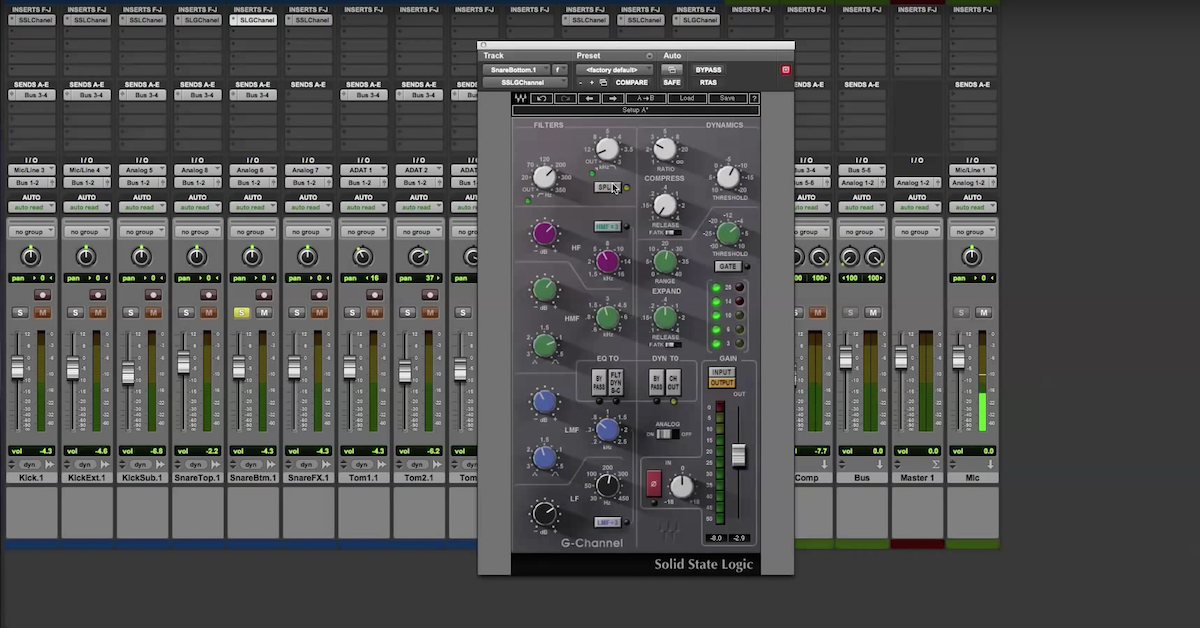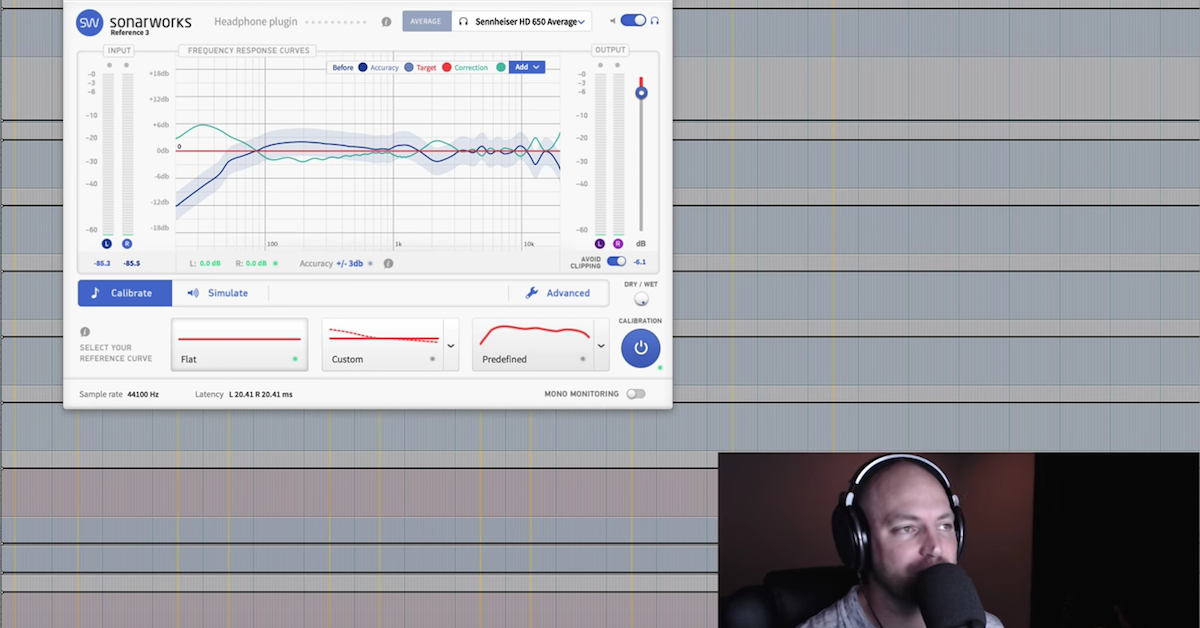10 Plugins for Mixing With Headphones (+ Production Tips)
Article Content
Anyone who’s attempted to regularly produce music in a space shared with others who may not be particularly appreciative of being exposed to studio monitors blaring at 85+ dB for hours and hours on end has likely thought of using headphones as a monitoring alternative. Cans are an attractive option for those who don’t want to disturb the neighboring apartments late at night or wake up the sleeping roommates. But can we rely on headphones for music production tasks like editing, mixing and even mastering? I went down this rabbit hole a few years ago when I became a new father. I found myself in a position where, if I wanted to work in my home studio while the baby was sleeping, headphones were my only option for monitoring. You don’t want to wake the baby. Ever.
When I first started in music production over twenty years ago, the prevailing wisdom was that closed-back headphones could be used for monitoring during tracking and any type of headphones could be used for certain editing tasks. But headphones were not to be used for mixing due to the fact that mixes done on headphones tended to translate poorly to speakers. Have a look at photos or footage from any professional recording studio from the pre-digital era, and what you’ll likely see are musicians wearing closed-back headphones while recording overdubs (so the music feed wouldn’t leak out of the cans and into the microphone, which would pollute the recording). During mix sessions in the control room, you’ll likely see a variety of loudspeakers and nobody wearing headphones.
Consider that headphones provide the listener with a drastically different sonic experience as compared to speakers in a room. Headphones beam each of the stereo channels directly into one single ear. With speakers, on the other hand, the left ear hears both the left and the right speaker and vice versa. This phenomenon is known as crossfeed. Headphones also completely remove room acoustics from the equation, because with speakers, the sound that’s inevitably reflected off of the walls, floor and ceiling in any room will play a major role in the overall sound that’s perceived. When these things are taken into consideration, one can see why headphones used to be shunned by professional mixing and mastering engineers, aside from an occasional spot check here and there.
Thankfully for those of us working in less than ideal situations, there have been a number of software tools that have been recently developed which make a set of good quality headphones a realistic choice for plenty of audio work. Additionally, consider how music consumers who once sat at home and listened to vinyl records on their home hi-fi speakers have made a decisive change in their listening habits — now usually opting for mobile playback using headphones/earbuds. Audio professionals must now mix and master for headphone playback first due to the ubiquity of headphone listening. Plenty of playback still happens on speakers too (so speakers can’t be ignored), but the importance of the headphone listening experience is now at the forefront of music production.
In this article, I’ll be sharing five tips for using headphones as a tool in music production, and I’ll be listing ten plugins that enhance the translation of headphone mixes. A headphone-based production environment in a DAW that makes use of appropriate plugins can yield results that were simply not possible before these tools were developed. I’ll be dividing the recommended plugins into three categories: those that flatten the frequency response of the headphones via EQ curves that are custom designed for each headphone model (or even each individual pair), those that simulate the experience — on headphones — of listening to quality studio speakers in acoustically tuned spaces, and plugins that do both of these things.
5 Tips for Using Headphones in Music Production
1. Use Closed-Back Headphones When Recording With Microphones
Especially while overdubbing, some sort of monitoring is a necessity. When recording virtual instruments via MIDI tracks or when recording an instrument through direct injection, the type of monitoring you choose to use is flexible — speakers and open-back headphones are just fine. With a live microphone, though, the type of bleed you’ll get from open-back headphones and (especially) speakers can cause big problems during mixing or even completely ruin your recording.
Closed-back headphones, when designed well, will minimize sound leakage. You’ll be able to hear the music while recording and not worry about tainting the take with extraneous noise. Some closed-back headphones do a better job of this than others, so this is something you’ll want to pay attention to when you go to buy a set. The Sennhieser HD280 Pro is a popular choice for this application; this model provides 32 dB of passive sound isolation out of the box. In practice this means you’d need to turn up the cans to pretty unreasonably loud levels before your microphones will pick up much sound leakage from this model. They’re also really handy if you need to record in the same room as a loud sound source — the isolation works to block outside sounds from entering the headphones too, so you won’t need to turn the volume up as much to get a workable headphone feed for your takes. I’ve also had good luck with the Audio Technica ATH-M50x when recording. While these cans aren’t quite as good at passive sound isolation as the Sennheiser HD280 Pro model mentioned above, they have a much flatter frequency response and a more natural sound. If you’re recording critical takes where tuning into your instrument’s timbre is of the utmost importance, something like this model from Audio Technica might better serve that purpose.
2. When Editing, Just Plug in and Go
Headphones have long been the tool of choice for editing work. This would include tasks like cutting and pasting (e.g. when comping from multiple takes), working with fades on clips, applying crossfades to an edit point, removing or altering a vocalist’s breaths and changing the timing of a track — either by sliding the recording along the timeline or by stretching/compressing the length of the recording.
What’s needed to make good decisions during editing work is a heightened attention to detail, and nothing highlights audible details like headphones. With speakers you’ll inevitably get a sound that’s somewhat clouded due to the direct sound from the speakers blending with the reflected sound produced by your room’s acoustic environment. This can be especially problematic if you’re working in an acoustically untreated or poorly treated space. But with headphones the sound originates mere millimeters away from each eardrum — there’s nothing between the sound source and your ear that could cloud the sound. You’ll be able to better pick out and fix even tiny sonic imperfections like clicks, pops, bad edits, etc.
For these tasks both closed-back and open-back headphone types can work well, assuming you’ve got a nice quiet space to work in. If background noise in your room is an issue at all, it’s probably best to stick with closed-back cans so that those tiny details aren’t being masked by the background noise that can easily get in through an open-back headphone design.
3. During Mixing, Correct the Headphone’s Frequency Response
If you mix on a playback system that’s, for example, bass heavy, a mix that sounds balanced to you will sound thin on a system with a more balanced response. When playback systems lie to you by overemphasizing certain portions of the sound spectrum and deemphasizing others, the decisions you make while mixing and mastering are compromised. If you want your mixes to translate well to the outside world, you need an accurate playback system.
Headphones are notorious for having frequency responses that are far from flat. There are some notable exceptions here, however as a general rule you’ll need to flatten out the response of your cans with EQ to have something workable for mixing. These days, this is an easy thing to do because a number of companies have developed software that comes pre-loaded with a database of headphone frequency response curves, along with a custom designed corrective EQ curve for each model. The resulting corrected sound will be much more trustworthy, and this can save you big headaches during post-production. It’s important to note that these plugins are meant to be inserted at the end of the chain on your master buss and used during monitoring only. Correction plugins should always be switched off when you go to make your final mixdown. This is because these plugins optimize the frequency response for your specific headphones only. Thankfully many of these plugins will warn you if you attempt to do an offline render with the plugin still enabled, but if you’re doing real-time mixdowns you’ll need to be especially careful with this.
I’ve got some recommendations for plugins that can correct your headphone’s frequency response below.
4. During Mixing, Use a Mix Room Simulation Plugin
Mixes made on accurate speakers in a well treated room tend to translate well to headphones, but mixes made with a raw headphone feed almost never translate well to speakers. Since headphones are missing the critical channel crossfeed and room acoustics that speakers provide, you’ll want to use one of the plugins (see below) that simulate the experience of listening on speakers while using headphones. Just like the frequency response correction tools mentioned above, these plugins also get switched off when making your final mixdown.
These room simulation tools make it much easier to judge the effect of panning a sound in the stereo field. I also find that I’m able to better judge the level of certain effects like reverb and delay that get used in a mix. They also assist in judging the level of deep bass sounds (sub 80 Hz or so) in your mix too, but in my experience this is still one of the main things you’ll want to check on a good speaker system. By the way…
5. Always Check Your Work on a Variety of Unprocessed Headphones & Speakers, and in a Variety of Rooms
If you’re mixing with headphones, I’m going to assume that you don’t have 24/7 access to a professionally designed and acoustically treated mix room equipped with accurate monitors. If you do, well, go do your mixes there!
For the rest of us, mixing with a good set of headphones that have been EQ corrected and fed into a mix room simulation plugin can get us a fairly trustworthy monitoring environment. That being said, it’s still a good idea to carefully check your work on a variety of playback systems. Check the mix in your car, in your buddy’s car, on the sound bar, on the phone speaker, on a set of earbuds, etc. You’ll want to get a good idea of how your mix will sound out in the wider world, and for that there’s no substitute for listening in a sampled selection of real world environments.
Top 10 Plugins for Mixing With Headphones
There are now quite a few companies that have developed software tools suitable for adapting headphones for mixing work. Some of these tools offer a great deal of functionality, while others are tightly focused on one or two specific tasks. For the purposes of this article, I’ll be concentrating on product features that are specifically meant to enhance working in a stereo environment while using headphones within a DAW, so I’ll be looking at plugins. Each of these plugins are meant to be placed on the master channel at or near the end of the signal chain. Be aware that some of these products are capable of other tasks too, such as speaker/room frequency response correction, surround sound simulation over headphones and correcting a headphone’s frequency response outside of a DAW for use with consumer music software such as Spotify or Apple Music.
I’ll be dividing this list into three categories: plugins used for frequency response correction, plugins used for mix room simulation, and plugins that do both of these things.
Frequency Response Correction Plugins
1. Sonarworks SoundID Reference
Sonarworks brings a tremendous amount of experience into frequency response correction, and their Sound ID Reference plugin (previously known simply as “Reference”) has been a part of my DAW environment for more than 5 years now. I used this plugin to correct the frequency responses of my Sennheiser HD380 Pro, Audio Technica ATH-M50x and Grado SR 80e headphones while mixing several of my own albums, and got excellent results in terms of mix translation with all three sets of cans. Frequency response measurements for more than 385 different headphone models are built into the plugin and are ready to be used for correction right away. Alternatively, you can purchase the plugin bundled with a new set of headphones that have been individually measured by Sonarworks, ensuring even greater accuracy from the applied frequency response correction. For the actual EQ curve that’s applied, Sonarworks offers a helpful variety of minimum phase zero latency filters, linear phase filters, or a mixture of the two.
If you spring for the version that contains the extra functionality, Sound ID Reference is also capable of correcting your room/speaker frequency response. This functionality makes use of a measurement microphone, which can be provided by Sonarworks. The Sound ID Reference Measure app will play test tones on your monitors and the measurement microphone will detect any areas where the response isn’t flat. Once this process is complete, the app will spit out a custom EQ curve for your own speakers/room which can be loaded into the Sound ID Reference plugin. Sonarworks also offers a less expensive plugin that’s focused specifically on headphones.
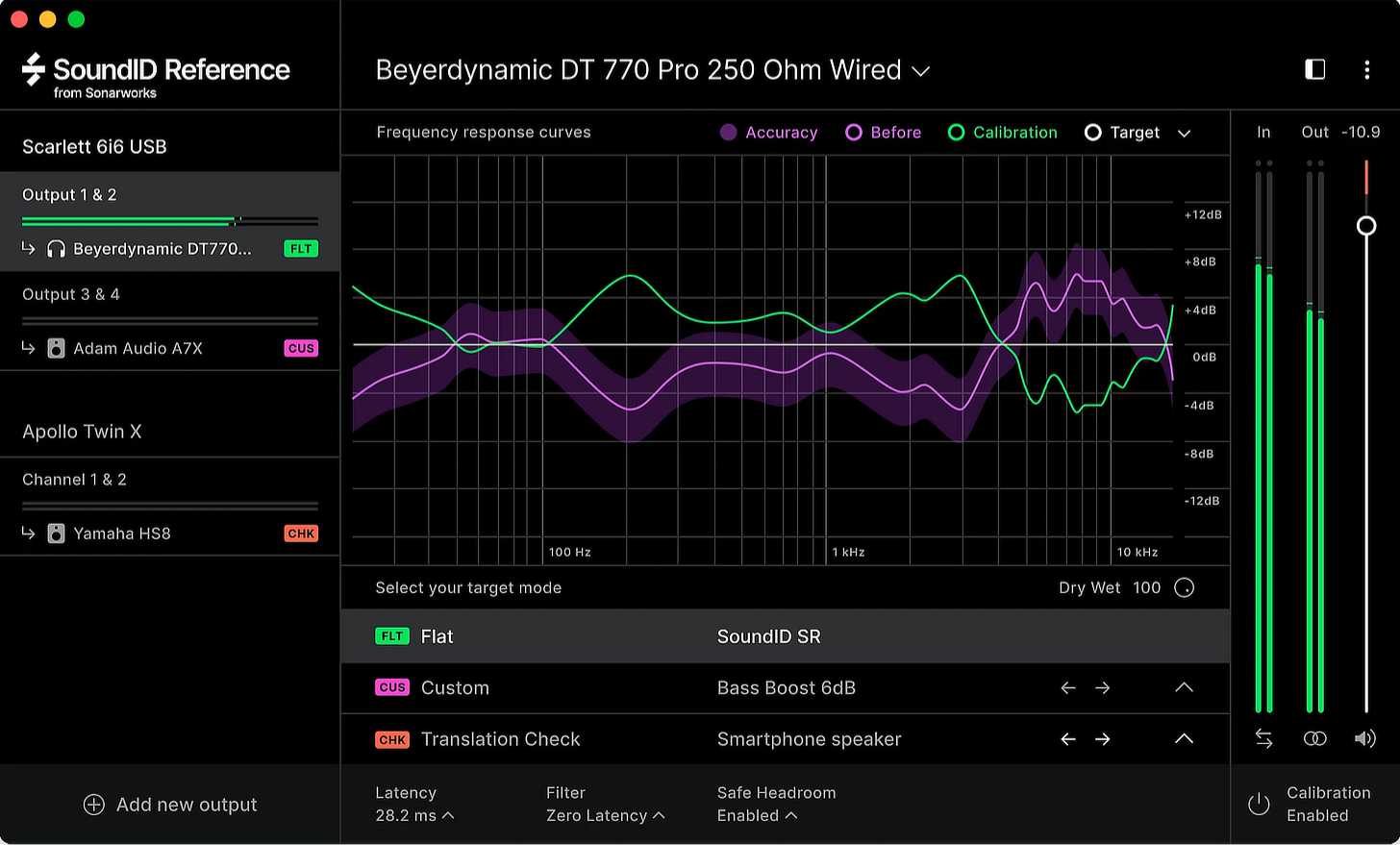
2. ToneBoosters Morphit
With over 360 headphone models on file, Morphit is more likely to have your particular headphone model than any other plugin listed here. Like other plugins made by Toneboosters, it’s simple to use, effective and inexpensive. But it’s also a polished and fully professional product. Just select your headphone model and then tell the plugin if you want the resulting sound to be flat, or if you want to simulate listening with the response of another set of cans. That’s it. It does what it does competently and quickly, and that’s exactly what a tool like this should do.
Sidenote
It’s well worth noting that these two plugins, although designed for the same task, produce surprisingly different results. I’m including a screenshot of the frequency response each company measured for the Sennheiser HD380 Pro as an example:

Look carefully and you’ll see that, although there are some similarities between these two charts, there are also major differences — especially in the midrange and top-end. Clearly, these two companies are using different methods to measure these headphones and/or to generate the EQ curves. Consequently they’re getting very different results. This is also true of many of the plugins listed below, where the frequency response correction is one portion of the plugin. With this in mind, it’s a good idea to try out each of these plugins and decide for yourself which is most useful in getting your mixes to translate. Thankfully most of these companies offer a generous free trial that can be used exactly for this purpose.
Mix Room Simulation Plugins
3. 112 dB Redline Monitor
Although this might be the simplest plugin on this list in terms of the user interface, it’s clear that there’s a lot going on under the hood here. Described by 112 dB as “…a so called “crossfeed plugin” with a few nifty extra’s,” Redline Monitor brings the headphone sound away from the space between your ears and effectively puts it out in front, nicely simulating how real monitors would behave. The user is able to tweak a few key sonic characteristics, such as the width of the soundstage, the intensity of the center area and the distance of the virtual speakers from the user’s head. Other than that, this is a “set it and forget it” plugin that improves mix translation without breaking the bank or requiring you to crack open the manual. I would personally use this plugin in conjunction with a reverb plugin that simulates the acoustic properties of a well designed mix room so that this part of the speaker listening experience is covered as well.
4. Goodhertz CanOpener Studio
CanOpener Studio operates in a similar fashion to Redline Monitor (mentioned above); in fact when these two plugins are identically configured I can only hear the slightest of changes in the resulting sound when I toggle between them. They’re also both similarly priced and rock solid in the DAW. The biggest difference is the extra customization options that CanOpener provides, along with a useful real-time stereo spectroscope and a simple (and small) vectorscope. I personally like to use a vectorscope in conjunction with a phase correlation meter, however that’s not supplied here. But the supplied vectorscope is sufficient to alert the user to a range of stereo balance and phase issues that can cause problems in a mix. CanOpener also includes dither plus an extensive EQ section — however it should be noted that this EQ section isn’t meant to correct your headphone’s frequency response. Rather, this is more of a general purpose EQ, where you’re able to tweak the overall presentation of the sound coming out of the plugin to suit your listening preferences. Here again, I would personally use this plugin in conjunction with a mix room simulating reverb plugin.
5. Dear Reality/Plugin Alliance DearVR Monitor
This plugin is intensely focused on providing, as described in the manual, “…your personal reference-grade mix room.” The approach here is not to measure an existing room and then try to recreate that sonic experience over headphones. Instead, Dear Reality has produced a plugin that provides a few fictional “ideal” mix rooms they claim will result in excellent mix translation.
To my ears this seems to be an excellent approach. The sound over headphones is natural and decidedly speaker-like. The plugin includes three separate mix rooms with slightly different characteristics along with a “dry” mix environment (described as being similar to an anechoic chamber). There’s also an “analytic” mix room meant to provide an optimum situation for multi speaker arrays.
It should be noted that this plugin, along with several other similar plugins from Dear Reality, provides an extensive toolset for simulating a wide variety of surround setups over headphones. The stereo simulation I tested is excellent, and I therefore suspect that this would be well worth looking into for those needing to simulate working on multichannel playback systems.
Frequency Response Correction and Mix Room Simulation in One Plugin
6. Blue Cat Audio Re-Head
While the other plugins on this list correct headphone frequency response with traditional minimum-phase filters or with less traditional linear phase filters, Blue Cat Audio’s Re-Head offers correction through the use of impulse response (IR) files. There’s also a relatively limited selection of EQ presets here that offer a more approximate frequency response correction for the included headphone models, but I was most impressed with the correction offered when loading in an IR file. This plugin also offers crossfeed functionality along with technology that aims to take into account and correct for the impact of the head and ears on the sound that eventually reaches our brains.
7. dSONIQ Realphones
This plugin does everything you need for headphone based mixing and then some. There’s a large database of headphone frequency response measurements used for correction, and there’s a fully featured mix room simulation complete with switchable near, mid and far-field monitors. The frequency response curves of the virtual speakers can be used or switched off for a flatter presentation. There’s a simulation of single-driver Auratone-style speakers, along with simulations of a range of popular consumer speakers, headphones and earbuds. There’s complete control over crossfeed, and there’s a fully loaded monitoring section giving the user control over each of the stereo channels, their phase plus mid/side.
Realphones might be a bit overwhelming for a novice user but the dSONIQ website has an excellent user guide complete with a setup video, so for the adventurous student of audio this is a plugin that can be grown into. For the technically experienced user, this plugin is robust enough to get the job done and then some.
8. Waves NX
NX is an interesting option because it offers a unique head tracking feature, along with the more standard features like room simulation, head modeling and frequency response correction. The head tracking feature can simulate the experience of freely moving one’s head around a space and still hearing the sound coming from a static speaker placement. This technology can work using one of two accessories: a standard webcam that identifies and tracks your head’s position, or a small bluetooth device supplied by Waves that clips onto your can’s headband and supplies head movement data to the plugin. I tested this feature using a run-of-the-mill webcam. When my audio buffer was set to 2048 samples, which is my usual setting for post-production situations, I found the delay between head movement and perceived head movement to be a little disorienting. With the buffer set much lower — in the 64 or 128 samples range — the effect was far more natural.
NX has been around for quite a while now at this point — it’s one of the oldest plugins on the market aimed at making headphone mixes translate better. I used this plugin when it was brand new for mixing in my home studio, and the mixes translated pretty well. NX doesn’t have features like speaker modeling or multiple mix rooms like some of the plugins on this list, but I can say from experience that it’s enough to get the job done. Waves has recently added new plugins to the NX line, with each new entry representing a virtualized realization of a famous recording studio’s control room.
9. Acustica Audio Sienna
Sienna is a suite of plugins that seems to tackle the usual design problem of how much complexity and control to offer the user by offering a variety of plugins that run the gamut from dead simple all the way up to a power user’s delight.
There’s the simple Sienna Reference plugin, offering only frequency response correction. Here the user simply selects their headphone model from an extensive database and then can tweak just three knobs: dry/wet, output trim and the mysteriously labeled “Magic Q.” According to Acustica, “…this control allows, once the knob is turned all the way to the right, to superimpose an ‘ideal’ correction curve that translates listening from headphones to speakers, which guarantees a more euphonic and more accurate listening experience. If the knob is turned all the way to the left, the control allows to obtain a more ‘clinical’ and linearized curve.” Of course one’s “ideal” correction curve would likely vary from user to user, so the linear setting to the left would be my personal starting point. Test this knob carefully before relying on it for mix translation. There’s also Sienna Reference Pro, which is nearly identical to Reference but with some additional EQ options that can be configured by the user.
Then there’s the Sienna Rooms plugin that adds mix room simulation functionality. The base package includes acoustic models of Spitfire’s mastering room and Acustica’s in-house room. Additional rooms and speaker models can be added by acquiring one or more of the Sienna Volumes B-F. These additional models can be useful for getting some idea of how your mix might translate to a particular type of room or playback system.
Finally there’s the powerhouse Sienna Guru plugin that does it all. When using this plugin, you’ll gain control over a whole slew of extra fine-tuning parameters that allow the user to customize their mix room and correction.
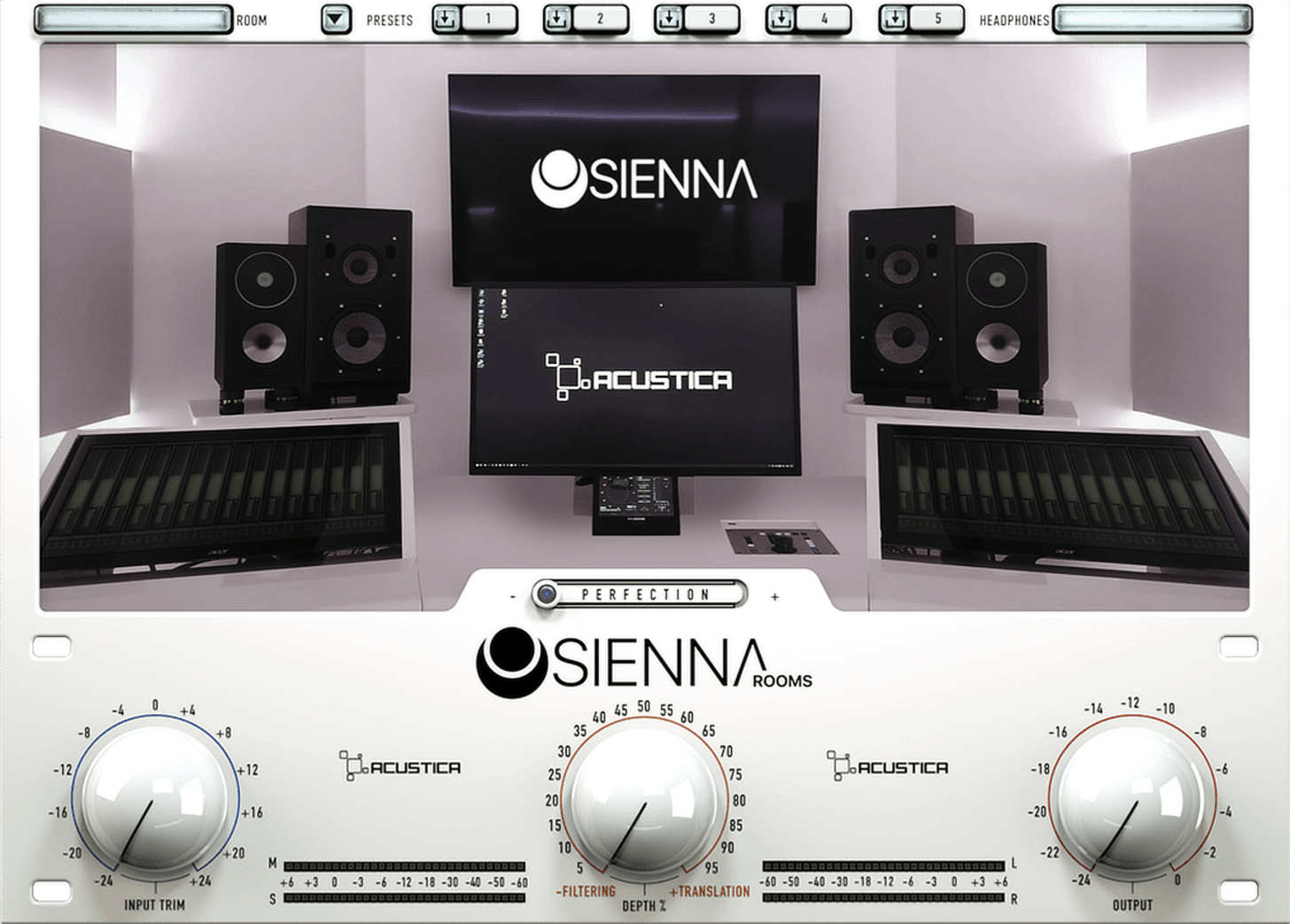
10. Steven Slate Audio VSX
As the only entry on this list offering a complete package of headphones bundled with the appropriate software, VSX is a convenient and high-quality option for those who don’t yet have professional-quality cans or those looking to expand their headphone options in the studio.
The headphones themselves are a closed back design and seem to offer a decent build quality. The unprocessed sound quality is pretty good too. It won’t compete with the most expensive, top-tier audiophile cans, but they hold their own at this price point. I appreciate the approach that was taken with the headphone cable — there’s a 1/8” stereo mini jack on the headphones themselves, so if the supplied headphone cable were to ever become damaged or faulty, it would be cheap and easy to replace it with a third-party cable that would allow for identical functionality. I wish every pair of headphones did this.
The included software is only offered as a VST2, VST3, AU and AAX DAW plugin. No system utilities are offered to get sound from your computer’s operating system into the headphones, though workarounds do exist. The software is offered in two different packages, with each edition of the software including one set of headphones as part of the overall package. The Essentials Edition is the cheaper option, and currently includes acoustic models of two studio control rooms, a club, the interior of a vehicle, and several different headphone models. The Platinum Edition includes a substantially larger collection of acoustical models, including more studio control rooms, more vehicle interiors, an audiophile listening room, a boombox, and more headphone models. The software was well designed and operated flawlessly in my DAWs on both Mac and Windows systems. It should be noted that VSX also offers the VSX Marketplace, where additional acoustic models can be added to the plugin for an additional fee.
